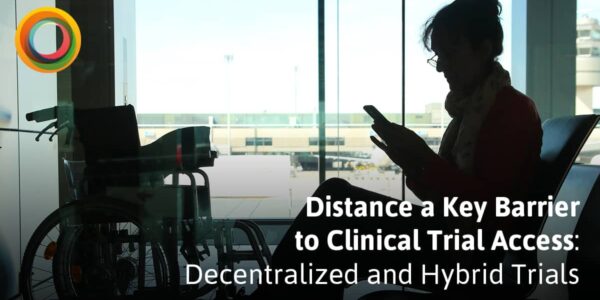
Low participation in clinical trials remains an issue across clinical research the world over. In fact, 85% of clinical trials fail to meet their enrollment targets, which is more than three times the number of those that are successful. Of the trials that do achieve their enrollment targets, a lack of diversity due to accessibility remains a big issue.
Only a small number of individuals actively seek clinical trial opportunities and participate regularly, and people from minority backgrounds continue to be significantly underrepresented. This means drugs are being developed without testing on different subgroups of patients (i.e. different ethnicities and genders), and there is no way of knowing how different demographics will respond to each therapy.
While lack of awareness of clinical trials is part of the problem when it comes to addressing low participation and diversity, socioeconomic, geographic and financial factors also come into play and must be addressed if clinical researchers are to overcome these problems.
Here, we explore the biggest social barriers to clinical trial accessibility from a patient recruitment perspective, as well as the benefits and drawbacks of technology in making research more accessible.
What are the biggest barriers to clinical trial participation?
When exploring ways to increase clinical trial participation, it’s essential to consider the characteristics of both patients and healthy volunteers and understand how these may impact decision-making processes pertaining to your research.
Socio-economic barriers are among the biggest reasons for low participation and affect the diversity of the patient population too. If people have lost their jobs or they’re facing financial hardship, how can you lessen the burden of clinical trial participation on this community? Can site visits be carried out closer to home? Can the travel requirements be lessened? Before we can effectively work towards breaking down barriers like these, first we must understand the issues faced by different populations.
Geography
Research has shown more than half of patients don’t have access to clinical trials at their local treatment centres. Patients shouldn’t have to travel long distances to a specific institution to participate in what could be a life-changing trial. However, this is often what’s being asked of them. In our recent webinar, Director of Study Operations at TrialSpark, Sean Lynch told us that the average patient in the US needs to travel more than 25 miles to a research centre. When you consider that many people with low incomes don’t have easy access to transport, it’s clear why this presents a challenge to clinical trial enrollment.
There is also a concentration of research happening in large hospitals, with CROs and sponsors regularly returning to the same sites, attracting many of the same patients. Consequently, the research often does not accurately reflect population demographics.
Distance is not the only issue here, but the time commitment too. Not everyone can afford to take additional time out from work or their lives to travel to a clinical centre.
Instead, clinical research should be brought to specialists in smaller areas, to address issues of access and opportunity. Where an appropriate local trial is not available, travel could be minimised by introducing home visits to replace some site visits. By removing geographical barriers, more patients and healthy volunteers will have the opportunity to take part in clinical trials, increasing participant diversity and making recruitment easier.
Finance
There is significant evidence of low income being a barrier to clinical trial participation, with patients of higher socioeconomic status enrolling in clinical trials more frequently. As a global recession with heightened unemployment is increasingly likely post-COVID, and more people are worried about finding a job or asking for time off from work, financial barriers to clinical trial participation will only increase.
In order to reduce the financial impact of clinical trial participation on patients, CROs and sponsors must work together to address the following:
- Concerns around upfront routine care costs
- Time away from work for clinical visits and travel
- Accommodation, meals and transport costs
- Unknown expenses for treatment of any adverse effects
Some ways we can reduce the financial burden on participants are:
- Clarifying definitions of routine care costs and who will cover them (i.e. the trial sponsor or the individual’s medical insurance)
- Providing patients transparent information relating to clinical trial costs, and directing them to resources available for financial assistance
- Replacing some site visits with home visits, where this is possible
- Ensuring processes are in place and technologies are used to ensure swift reimbursement of all costs incurred
Education
If patients and healthy volunteers simply don’t know about clinical trials, they don’t have any opportunity to engage.
Better public education around clinical trials is therefore essential – including how they work, the benefits and risks, and what will be expected of them. This public communication should take into account each demographic’s individual needs. For example, sponsors will need to consider how messages are communicated to people of different cultures, and those with lower levels of health literacy.
One key way that we can promote better health literacy, including understanding of particular diseases and how the clinical industry works, is through congresses and conferences, as well as providing resources to allow for participants to educate themselves. While virtual events have begun to make this kind of education more accessible, some are still charging patients to attend.
Investigators would benefit greatly from enabling wider access to education for patients and the public, as this will ultimately lead to better understanding, patient advocacy, and higher clinical trial enrolment.
Currently, the majority of clinical trial advocates are “expert” patients who have spent a significant amount of their own time and effort educating themselves, learning new skills, and training in patient advocacy. Peer-to-peer discussions among patients and volunteers, driven by these “expert” patients, go a long way in promoting health literacy around clinical trials. In order to recruit more patients and volunteers, the advocacy space must become accessible to more patients and volunteers from diverse backgrounds – this means wider access to advice and support.
Technology and clinical trial accessibility
Technology has a huge part to play in improving clinical trial accessibility and bringing in more diversity. Technological advancements in the clinical space, and in our day-to-day lives, allow patients to participate in trials remotely. This reduces the burden of travel, breaks down financial barriers, and improves accessibility to facilitate participation from a wider demographic of patients.
Access to technology
While technology opens up many opportunities, it also presents its own barriers when it comes to accessibility. Technical literacy, access to devices and special aids, as well as poor or no WiFi connection, can create significant stumbling blocks for patients engaging in clinical trials.
Globally, there are many patients who aren’t tech-savvy enough to deal with webcams or online portals, so we will need to provide education and training around technological processes if they are to be an enabler for participation in clinical studies. What’s more, not everyone has access to a computer or smartphone, so provisions may need to be made here too.
Identifying and addressing barriers to clinical trial accessibility is only the first step
We still have a long way to go to make clinical trials accessible to a more diverse population of patients and volunteers. Social determinants such as finance, education and geography limit those able to participate, and those in the clinical industry must be willing to address the obstacles standing in the way of these demographics.
By dismantling structural barriers, more clinical trials stand a chance of reaching their enrollment targets with higher levels of diversity, resulting in the development of treatments which are effective across all age, gender and racial groups.
Think remarkable. Expect remarkable. BE remarkable.
We deliver remarkable patient experiences that improve clinical trial outcomes.
We empower healthcare providers with next-generation care management tools and technologies.
We help CROs deliver high-performance patient experience management, and support pharma / biotech to attract, engage, and maintain patient participation in clinical trials.
Remarkable means the right people, the right technologies and the right systems to deliver the best possible outcomes for you, your patients, and your clinical trial.
Let’s make your next study remarkable. Contact us now to discuss how.



